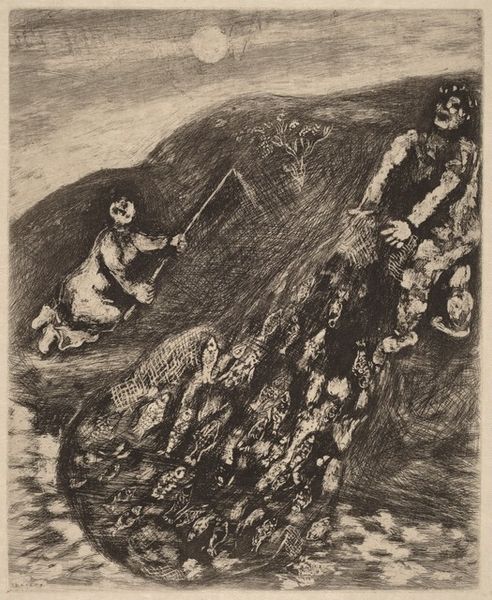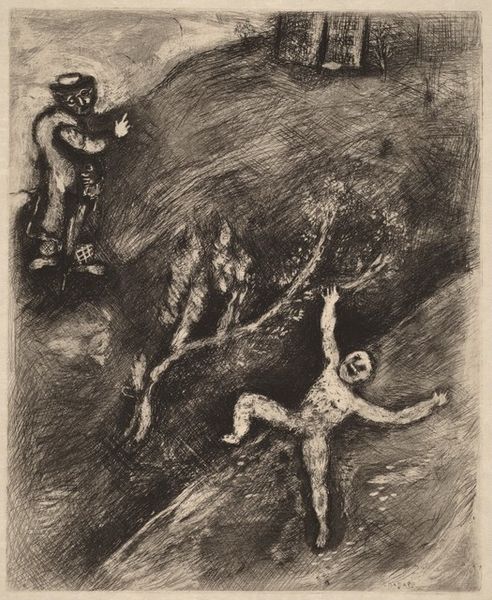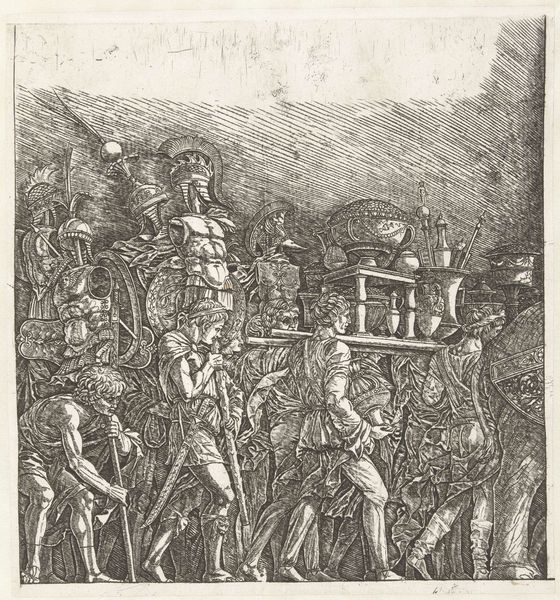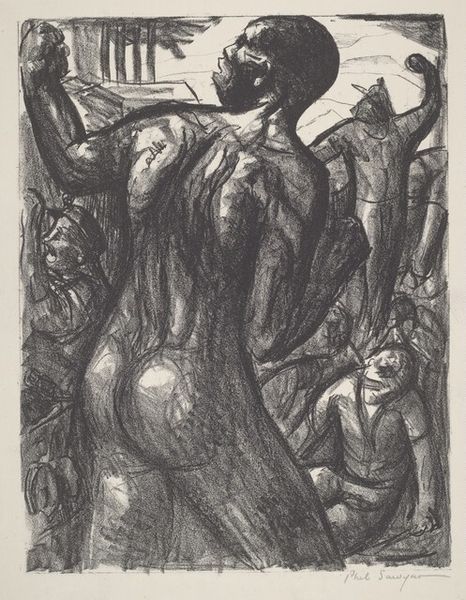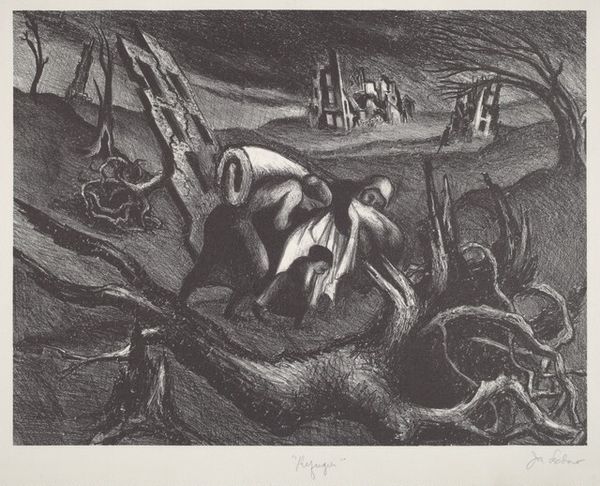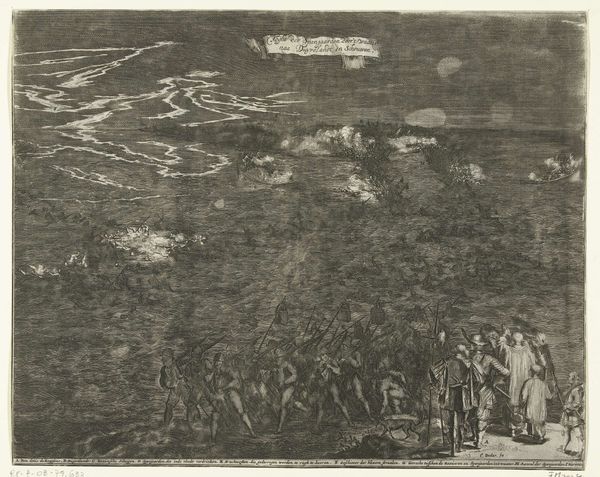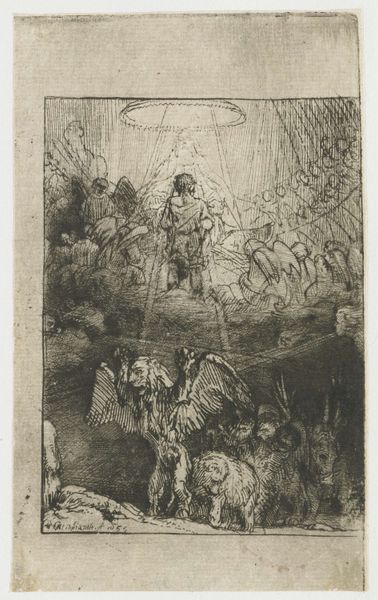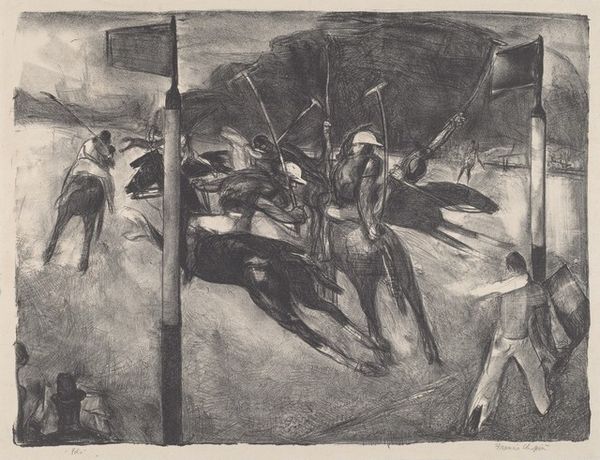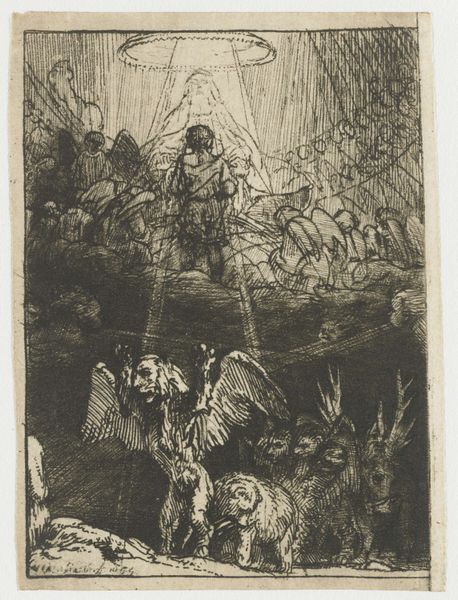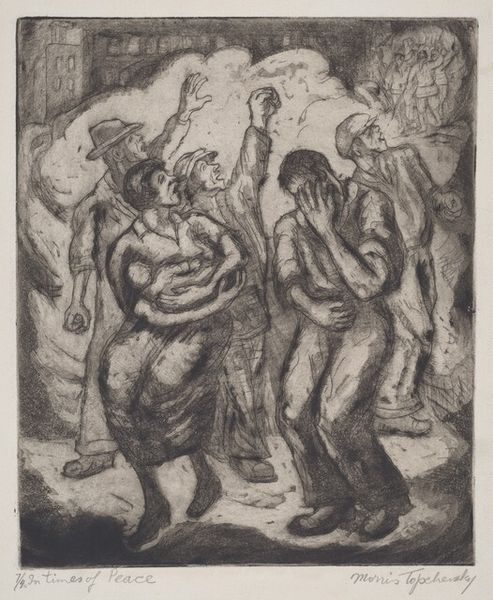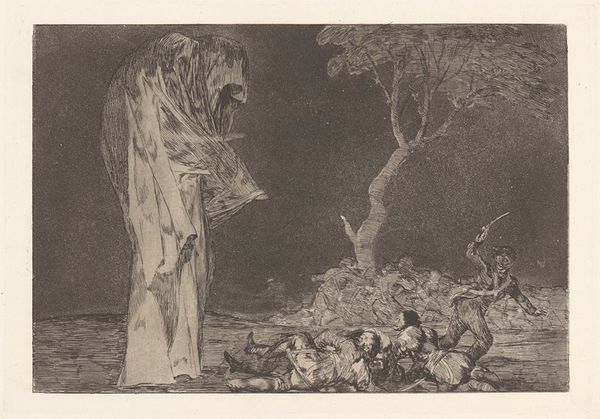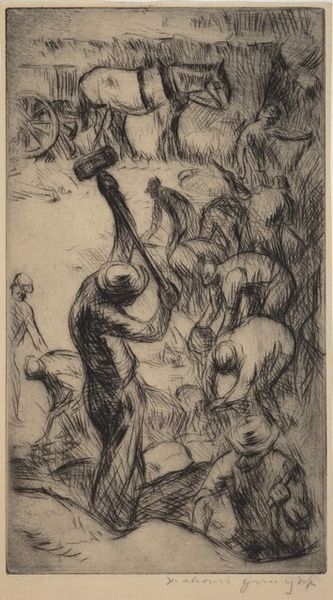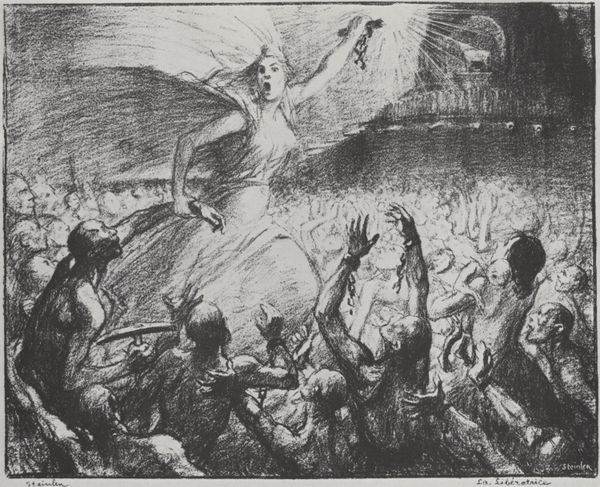
drawing, dry-media, graphite
#
pencil drawn
#
drawing
#
toned paper
#
light pencil work
#
pen sketch
#
pencil sketch
#
old engraving style
#
landscape
#
figuration
#
dry-media
#
personal sketchbook
#
pen-ink sketch
#
line
#
pen work
#
symbolism
#
graphite
#
sketchbook drawing
Copyright: Public domain
Curator: This drawing is titled "Marche Vers La Lumiere," or "March Towards the Light," by Théophile Alexandre Steinlen, created in 1903 using graphite and dry media on toned paper. Editor: It has an arresting visual energy, almost frantic. A crowd surges upwards toward a figure bathed in light at the top. It evokes the concept of upward mobility or enlightenment. Curator: The materials themselves, humble graphite on paper, are quite telling. Steinlen was known for his illustrations in socialist publications like "Le Chat Noir". Examining these cheap production methods allowed art to speak directly to and for the working class. Editor: That context is vital. Knowing the socio-political climate gives so much more weight to the imagery. You see not just aspiration, but a tangible sense of collective effort and struggle towards a better future, which is further amplified by its display in leftist circles. Curator: Exactly! It underscores how Steinlen democratized art, moving away from traditional oil paintings viewed only in elite salons and galleries. The accessibility of prints fostered broader public engagement with these radical ideals. Editor: I wonder about the figure at the top. The light suggests hope or some guiding principle, but who did the artist and audience understand it to represent? It reminds me of classical allegorical depictions. Curator: I'm inclined to believe that is a deliberate choice—to pull at the idea of something iconic that they already are familiar with, allowing Steinlen to bring new awareness with familiar material. Editor: It prompts reflections about who benefits from art, how images mobilize beliefs, and who can produce them. Curator: Reflecting on the piece, it serves as a reminder that art’s social life is just as important as its aesthetic properties. Editor: Agreed; it underscores the power of images in shaping political thought. A vital testament of visual communication and accessibility.
Comments
No comments
Be the first to comment and join the conversation on the ultimate creative platform.
